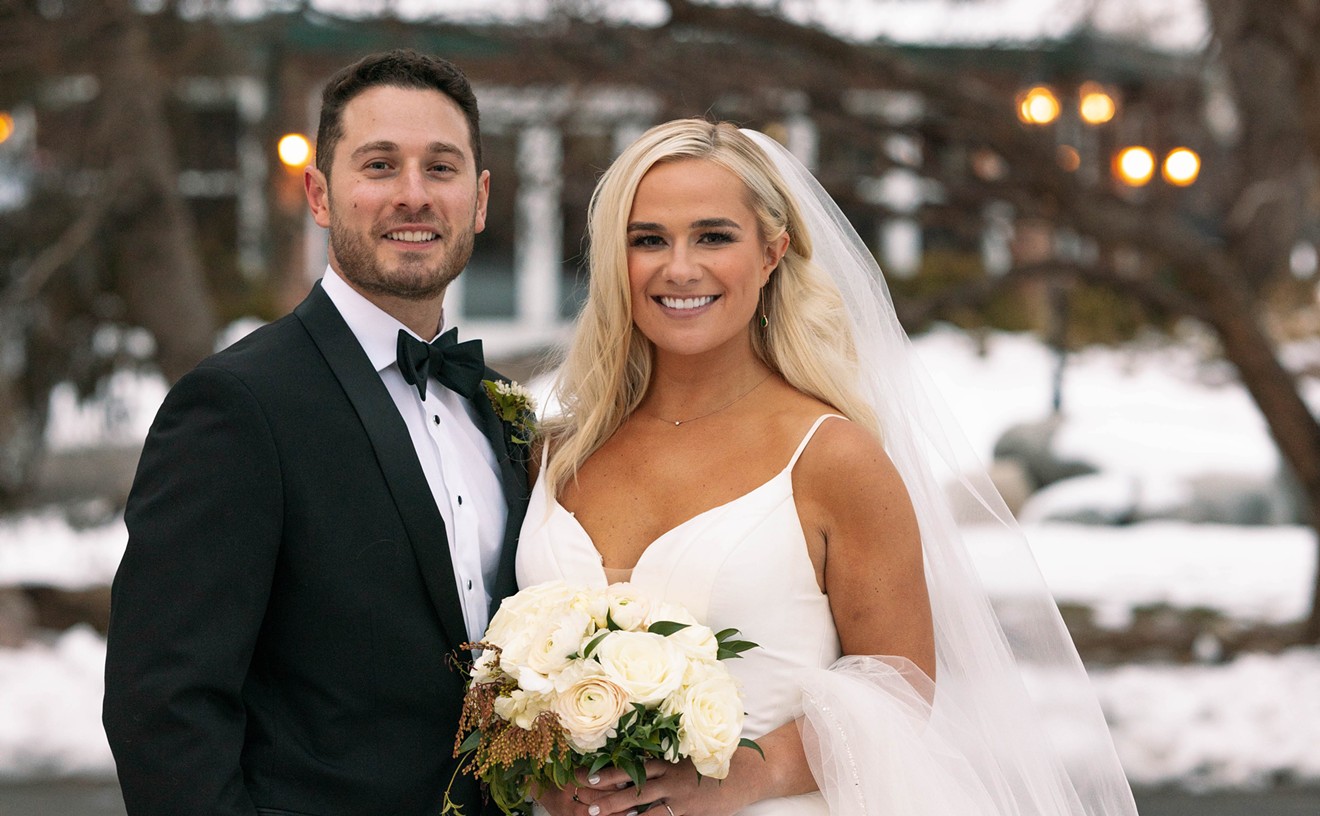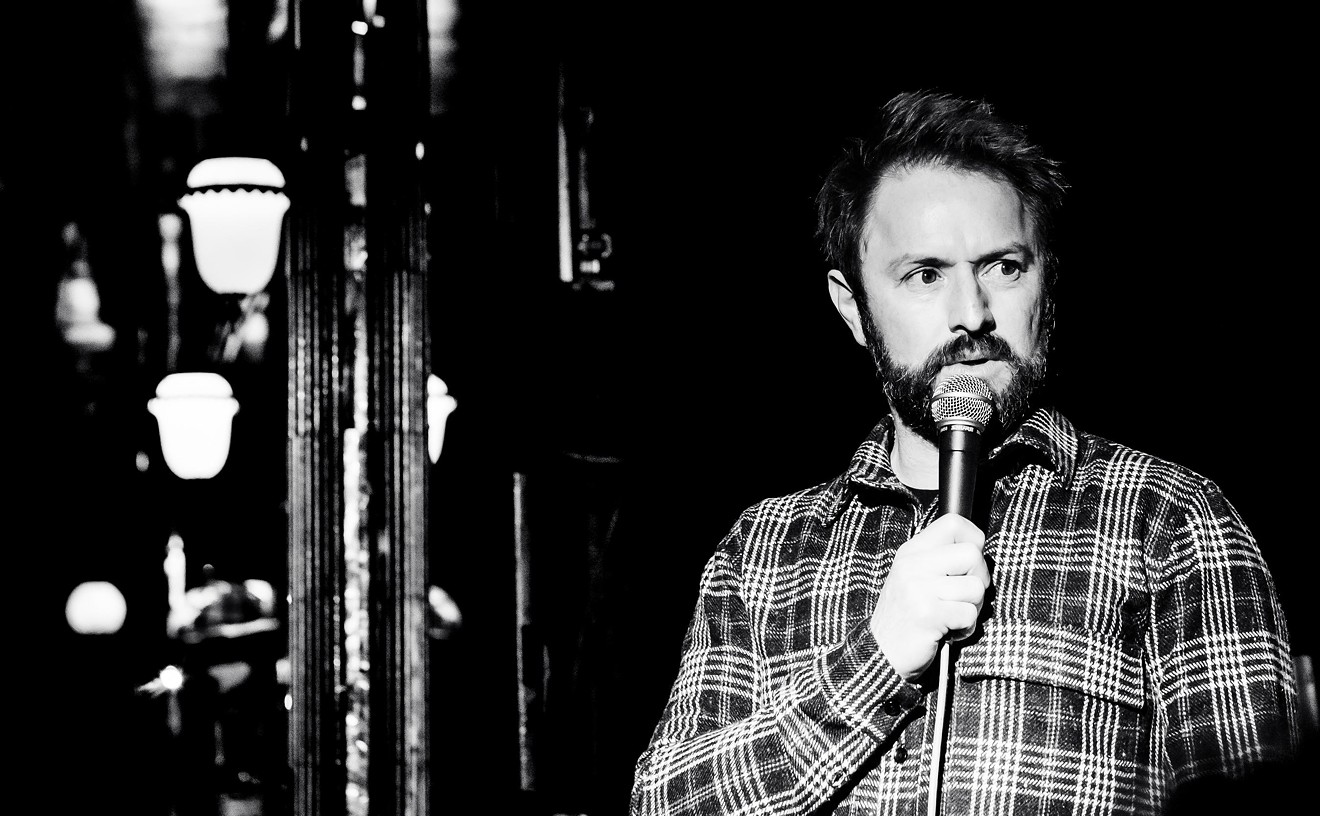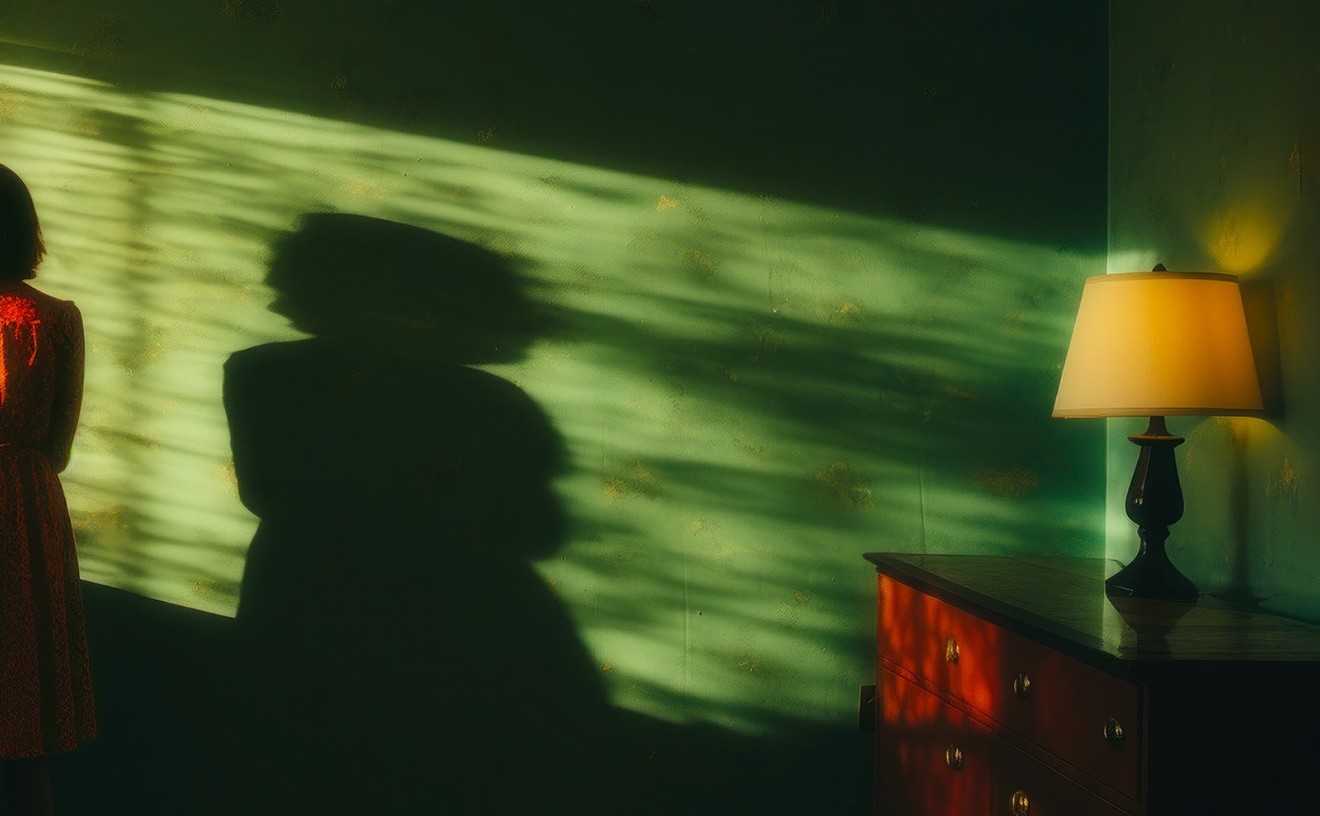Hudson was born in Salt Lake City in 1938. When he was a child, his impoverished family relocated to a trailer park in Richland, Washington, where one of his friends was William T. Wiley, who, like Hudson, would go on to become a major West Coast artist. In 1958 Hudson entered the San Francisco Art Institute, then the unrivaled center of contemporary art in California. He earned a BFA in 1961 and an MFA in 1963, by which time he was already nationally recognized as a founder of the Bay Area variant of the funk movement. His greatest early achievements came in the field of sculpture, though he had been trained as a painter. Perhaps that training was the reason Hudson began in 1963 to paint his sculptures of found objects, which had previously been finished in monochromes, typically the color of the bare metal he used to make them.
Ceramics, Sculpture, Drawings is Hudson's first solo show in Denver, and it's a rare local appearance for the artist, whose work was last seen here twenty years ago in a group show at the Denver Art Museum.
The Robischon exhibit includes a new example of Hudson's painted sculpture and a recent piece that returns to his earlier days. Both are visible through the gallery's display windows. As we enter, the brightly painted piece "Blue Redtail Hawk" fills the entry space; it is the most impressive object in the show. As with many of Hudson's works, the point is to soften the distinction between painting and sculpture. This assemblage, made of found objects, takes up the topic of the artist's studio. On a red-painted wooden easel, Hudson has placed a canvas that is densely painted with ambiguous, nominally representational elements -- mostly in cool blues, but with just the right accents in fiery yellow and orange. Suspended in front of the canvas is an antique rug beater with an animal horn pushed into it; below that is a child's sandbox pail. The hanging components fool the eye; at first they appear to be part of the two-dimensional painting. Hudson also used billiard balls, a broken wagon wheel and a cowboy hat painted to match the canvas, as well as a panoply of other objects.
Opposite "Blue Redtail Hawk," almost right against the window, is the more subtly hued "Say It With Flowers." This work is purely sculptural, with little or no reference to the medium of painting. On a circular stainless-steel base, Hudson has mounted a series of metal forms in bronze and stainless steel, which results in a much-quieter-than-expected visual effect dominated by grays and browns. While Hudson has included an old painted metal toy as part of the piece, he mostly leaves the surface in a natural state, with tonal variations created by the different metals.
Ceramics, Sculpture, Drawings also features more than half a dozen of Hudson's ceramic sculptures, which inhabit a category of their own. The artist became interested in ceramics in the early 1970s, more than a decade into his professional career. Working with California ceramic artist Richard Shaw, Hudson produced his first slip-cast porcelain sculptures in 1973. They were shown the same year at the San Francisco Museum of Art in an exhibition organized by its then-contemporary art curator, Suzanne Foley. More than anyone else, it was Foley who helped to establish the national fame of Bay Area artists, including Hudson, by supporting their work through exhibitions and acquisitions right in their hometown.
The porcelain sculptures here are mostly small, but their complicated forms must be extremely difficult to cast precisely, put together correctly and fire without mishap. They share some characteristics with Hudson's more typical assemblages (especially the polychrome finishes), but given the medium -- and the influence of Shaw -- they often refer to the vessel tradition of functional ceramics, with many incorporating vases, ewers or bottles. In "Blue Rabbit," for example, a chalice with a crenelated bowl is paired with a brightly glazed rabbit figurine, while "Full Moon Bottle" resembles a puzzle jug. Even more straightforward are the elaborate vases "Wing Jar" and "Manuel's Cigar Jar" (the latter pays homage to Manuel Neri, one of Hudson's teachers and mentors at SFAI; more about him later).
Interspersed among the sculptures are Hudson's paintings on paper. With their crowded and ambiguous compositions and tremendous color effects, these abstract paintings are marvelous. Not surprisingly, they are closely akin to the painted canvas the artist used in "Blue Redtail Hawk."
In the small center gallery, Robischon has supplemented the Hudson show with an economical look at prints by a South American artist. The prints in Beatriz Milhazes: Screenprints make a perfect companion to Hudson's work. These pieces also recall the 1960s, but there are some fundamental differences. Whereas Hudson's contemporary work is a continuation of the visual language he first developed in the '60s, Milhazes's represents a current revival of interest in the art of that time. But don't hold this retro pose against her: Milhazes could not have been a '60s pioneer, as she was born in Rio de Janeiro in 1960; presumably, her mother wouldn't let her circulate in vanguard art circles until she was older.
It was in the 1980s, after graduating from the Escola de Artes Visuais de Parque Lage, that Milhazes became known in her native Brazil. Opportunities for international exposure have only come in the last few years.
Stylistically, Milhazes's images have a hallucinogenic character related to '60s op and psychedelic art. She has a lively palette, and there's the unmistakable presence of wallpaper patterns, too, especially those with floral and vegetal motifs. In "No campo," Milhazes fills the paper with a flower in the form of a mandala, a Buddhist symbol for the universe, using dozens of colored dots to create stunning and slightly eye-straining optical effects. The background, a baroque-revival exercise in yellow on silvery gray, suggests the atmosphere of a kitsch, pseudo-elegant powder room.
Less hieratic are a pair of larger and more elaborately composed prints, "O pato" and "Uva selvagem." In these, the floral mandalas and other depictions of flowers and circles are laid over one another, creating a lyrical and asymmetrical balance in the two compositions.
Beyond the Milhazes, in Robischon's intimate Viewing Room gallery, is the handsome if small Manuel Neri. This exhibit is partly a reprise of the Neri solo show mounted at the gallery earlier this season, but a few of the works featured in the current presentation were not a part of that show; instead, they were pulled from the sizable stock of the artist's work that the gallery keeps on hand.
Such is the case with "Catun #1," a life-sized cast bronze of a nude female figure, that is signature Neri. The figure is conventionalized, with its details eliminated: The face is blank, the hands shapeless globs. Most of the piece is finished in a dark-brown patina, but light-colored paint has been smeared over the breast and onto one of the arms. Two large mixed-media paintings on paper, "Coniunctio IV" and "Coniunctio V," also weren't in the previous show; they're a pair of closely associated pieces that, like Neri's sculptures, use standing female nudes as their subjects.
Female nudes, among other things, also appear in Deborah Howard: Labyrinth, across town at the O'Sullivan Arts Center at Regis University.
Howard, who was trained as a printmaker at the Rhode Island School of Design and the University of Wisconsin, now teaches painting and drawing at the University of Denver. Interestingly, and perhaps as a result of her printing background, Howard does not paint on canvas; instead, she mounts paper onto stretched canvas by wetting it and adhering it while it's still wet.
The nudes are fairly erotic, which is Howard's intention. Done in gesso and graphite powder, they are creamy and smeary. In "Embrace," a female nude is entwined with a male nude (though, truthfully, the figures are pretty androgynous). The couple appears to be having sex, but Howard has not been too explicit; what's happening in the picture is fairly vague. Less erotically charged, though still sensual, is "Red Emergence," in which a voluptuous woman, seen from the rear, seems to be pulling a red sweater over her head. The sweater is merely suggested by scribbles done in oil pastel.
But this selection of nudes is quite distinct from the abstracts that make up most of the show. Installed just around the corner is the painting "Labyrinth," from which the show takes its name. It's a tangle of jewel-toned lines constrained in a circle and was done in watercolor, ink, acrylic and gesso. The colored lines weave in and out of one another like a basket; it's a motif that appears in many of her paintings, since for Howard, baskets are evocative of the paths taken from birth to death.
The basket-weave imagery appears in "The Queen," which is hung on the wall just to the right of "Labyrinth." In ink and gesso on paper, Howard places an egg-shaped basket, which is unraveling at the top, in the center of the vertical composition as though it were a portrait head. Similarly, in "Luxor," on the south wall of the large main gallery, a basket stands in for a human subject -- but it looks like a full figure instead of just a head. In "Luxor," Howard uses gold metallic paints that glitter under the gallery's spotlights. It's a fitting technique, given the subject: the Egyptian city of Luxor, which Howard translates into "luxury."
Also in the main gallery are several monumental pieces Howard created by joining large sheets of paper. "Triple Mobius," in oil pastel, ink and gesso, is a modified version of the Möbius strip, a mathematical form that twists to reveal both sides of the flat strip at once. It's monumental not only because of the simplicity of the formal arrangement but also because of its tremendous size (it's over eleven feet tall), especially considering that it's made of paper.
Even larger are two of the newest pieces, "Arachne" and "Enigma" (though everything here is fairly new, since Howard created all the work specifically for this exhibit). The triptych "Arachne" combines the basket-weave motif with images of snakes. "Enigma," a vertical diptych, also picks up on symbolic baskets but is more elaborately composed than the unified ones in "The Queen" and "Luxor" or the more freely done "Arachne."
The work in this show began as a sketchbook filled with drawings of woven forms. But according to the accompanying catalogue, Howard had another source of inspiration. Her nine-year-old son, Solomon, created a book for her filled with what he called "prehistoric writing," and she transferred its images into her paintings.
It's fascinating that Howard's highly individual and idiosyncratic style is not too different from the funky, psychedelic work of the various artists at Robischon. Just like Hudson, Milhazes and Neri, Howard's pursuit is about a private vision based on self-awareness and spirituality. And in those ways, her work, like theirs, looks back to the art of the 1960s.










